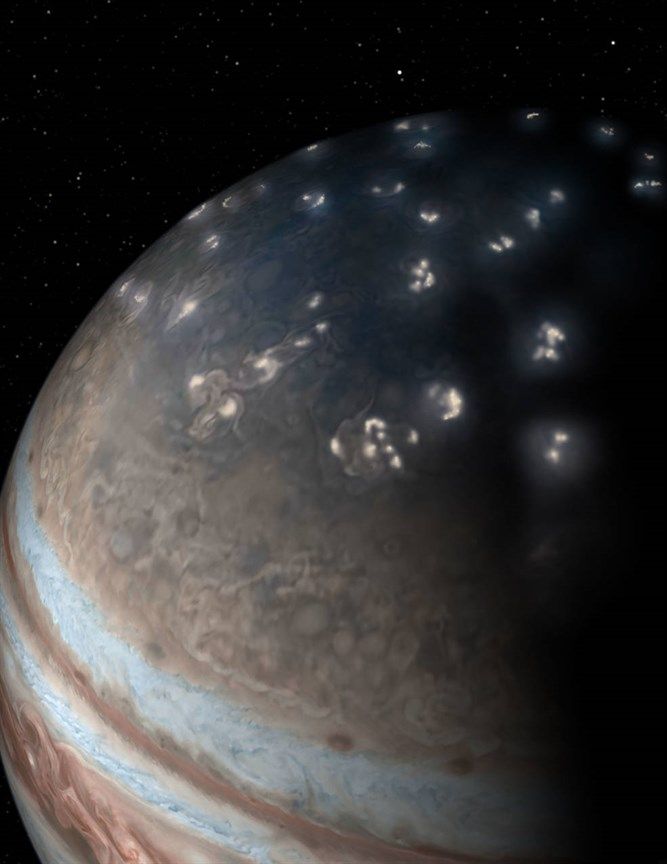Jupiter hides many mysteries from us. For almost 40 years, NASA has been trying to explain the mysterious light fields that appear on this planet. This has now been achieved. This was made possible by the data collected by the Juno probe. These lightning bolts somehow resemble earthly ones, but on the other hand, they are the opposite of them.
The Juno probe, which has been studying Jupiter since July 2016, has given us a lot of valuable information about the largest planet in the Solar System. NASA has known for a long time (39 years) that flashes are taking place on this planet. A bit similar to these from Earth’s storms. Thanks to the data studied from Juno, it was possible to learn more about them.
Shannon Brown from the Jet Propulsion Laboratory in Pasadena explains that during the first eight close-ups to Jupiter the Juno probe recorded 377 atmospheric discharges. These were registered in the range of megahertz and gigahertz. It turns out that these lightning bolts are similar to those on Earth. But we learn that on every planet they look different.
In the case of Jupiter, atmospheric discharges accumulate close to the poles of the planet. This is because the heat on the distant planet is distributed differently. The earth is closer to the sun and gets 25 times more sunlight. Scientists claim that these discoveries will help to understand the circulation and flows of energy in Jupiter better.
NASA says that if it hadn’t been for the Juno, it wouldn’t have been for so much information. Voyager 1 delivered too few of them. The U.S. Space Agency will carry out another, already thirteenth, flight in the direction of Jupiter with a probe on July 16th.
